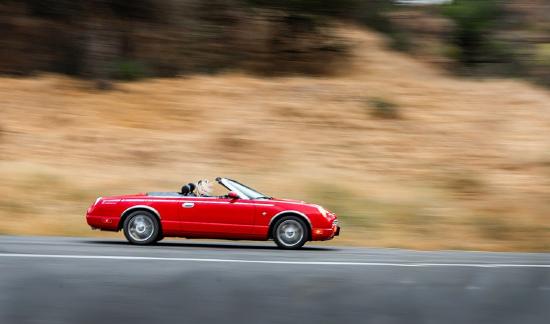5.4: Comment est-ce qu'on y arrive ?
( \newcommand{\kernel}{\mathrm{null}\,}\)
In this section, you will learn how to:
- Talk about means of transportation
- Give directions to different places in town
Listen to the audio clips that follow on this page to hear the French pronunciation of vocabulary and examples presented.
On étudie !
 "This work" by Tyler Clemmensen , Pixabay is in the Public Domain
"This work" by Tyler Clemmensen , Pixabay is in the Public Domain "This work" by István, Pixabay is in the Public Domain
"This work" by István, Pixabay is in the Public Domain "This work" by Erich Westendarp, Pixabay is in the Public Domain
"This work" by Erich Westendarp, Pixabay is in the Public Domain "This work" by CHENA, Pixabay is in the Public Domain
"This work" by CHENA, Pixabay is in the Public DomainLes moyens de transport
| Français | Anglais |
|---|---|
| le métro | the subway |
| un quai | a (station) platform |
| un wagon | a (train) car |
| un taxi | a taxi |
| un bus | a bus |
| un scooter | a scooter |
| un chauffeur | a driver, chaffeur |
| des rollers | rollerblades |
| un skateboard, une planche à roulettes | a skateboard |
| une trottinette (électrique) | a, an (electric) scooter |
We use the prepositions en and par when talking about the means of transportation we use. They both mean something like by or on a. Usually en is used for people and par is used for cargo or mail:
Je voyage à Paris en avion. (I travel to Paris by plane.)
J'envoie la lettre par avion. (I sent the letter by plane.)
| Français | Anglais |
|---|---|
| un arrêt d'autobus | bus stop |
| une gare routière | bus terminal |
| la circulation | traffic |
| un embouteillage | traffic jam |
| un feu de signalisation | traffic signal |
| un carrefour | intersection, crossroad |
| le coin de la rue | street corner |
| la rue | street |
| l'avenue | avenue |
| un plan | (city) map |
| Français | Anglais |
|---|---|
| monter dans un autobus | to get on a bus |
| obéir aux règles | to follow the rules, regulations |
| prendre un train | to take a train |
| rouler en voiture | to travel by car |
| stationner | to park (a car) |
| aller à pied | to go by foot, to walk |
Les directions

To help direct someone somewhere you can also use these expressions like tournez à droite (turn right), tout droit (straight ahead), or par là (that way). It would also come in handy if you could understand the directions others are giving to you. So, here we go!
| Subject pronoun | -er verbs (-s dropped in tu forms) | all other verbs (-s kept in tu forms) | Commands with reflexive pronouns |
|---|---|---|---|
| tu | (ne) tourne (pas) | (ne) prends (pas) | arrête-toi, ne t'arrête pas |
| nous | (ne) tournons (pas) | (ne) prenons (pas) | arrêtons-nous, ne nous arrêtons pas |
| vous | (ne) tournez (pas) | (ne) prenez (pas) | arrêtez-vous, ne vous arrêtez pas |
Pour en savoir plus.
How to give directions
To give someone directions, you can do so in several different ways, using the imperative form in the formal or informal conjugation, or use the infinitive of the verb.
- The imperative form is used to give commands in French. It is usually only conjugated for “tu”, “vous” and “nous”. When giving directions, you will only use the formal “vous” and informal “tu” conjugations.
- The infinitive form is just the non-conjugated form of the verb. In the table below, you can compare the infinitive form with the two imperative conjugations of important verbs used for giving directions.
| Infinitif | Infinitive | Formel (vous) | Familier (tu) | Formal, Informal | Nous | We form |
|---|---|---|---|---|---|---|
| Aller | To go | Allez | Va | Go | Allons | Let's go |
| Tourner | To turn | Tournez | Tourne | Turn | Tournons | Let's turn |
| Continuer | To continue | Continuez | Continue | Continue | Continuons | Let's continue |
| Traverser | To cross | Traversez | Traverse | Cross | Traversons | Let's cross |
| S’arrêter au feu | To stop at the light | Arrêtez-vous au feu | Arrête-toi au feu | Stop at the light | Arrêtons-nous au feu | Let's stop at the light |
| Prendre | To take | Prenez | Prends | Take | Prenons | Let's take |
| Suivre | To follow | Suivez | Suis | Follow | Suivons | Let's follow |
| Passer devant | To pass in front of | Passez devant | Passe devant | Pass in front of | Passons devant | Let's pass in front of |
| Faire demi-tour | To make a U turn | Faites demi-tour | Fais demi-tour | Make a U turn | Faisons demi-tour | Let's make a turn |
| Descendre | To go down | Descendez | Descends | Go down | Descendons | Let's go down |
| Monter | To go up | Montez | Monte | Go up | Montons | Let's go up |
Click here to listen to these people give and get directions. Notice that there are two columns, for formal and informal dialogues. Here is a list of useful prepositions, verbs, and expressions for giving directions:
| Français | Anglais |
|---|---|
| aller tout droit | to go straight |
| tourner à droite, à gauche | to turn right, left |
| traverser (le pont, la rue) | to cross (the bridge, street) |
| passer sur, sous (le pont) | to pass over, under the bridge |
| un croisement | a crossing, junction |
| un carrefour | an intersection |
| un feu (de signalization) | a (traffic) light |
| au coin de la rue | at the corner of the street |
| la première, deuxième rue | the first, second street |
| un rond-point | a roundabout |
| un panneau stop | a stop sign |
Study the Quizlet vocabulary flashcards. Listen and repeat the French pronunciation.
On pratique !
Activité A
Imaginez que vous êtes sur votre campus. Donnez des directions du campus à l'endroit où vous habitez. Écrivez un minimum de 4 phrases.
Activité B
Complétez les phrases avec le moyen de transport approprié.
- Un vaisseau qui navigue les voies d'eau est un ____________.
- Un appareil de navigation aérienne est un _______________.
- Le __________ est un moyen de transport ferroviaire.
- Un ________ est une automobile de location munie d'un taximètre.
- Le _________ est un véhicule hippomobile qui servait au transport des voyageurs en ville.
On approfondit !
Use the following resources to type accents and/or search for words:
- Accents: ç, à, é, è, â, ê, î, ô, û, ù, ë, ï, ü
- Dictionnaire français-anglais

